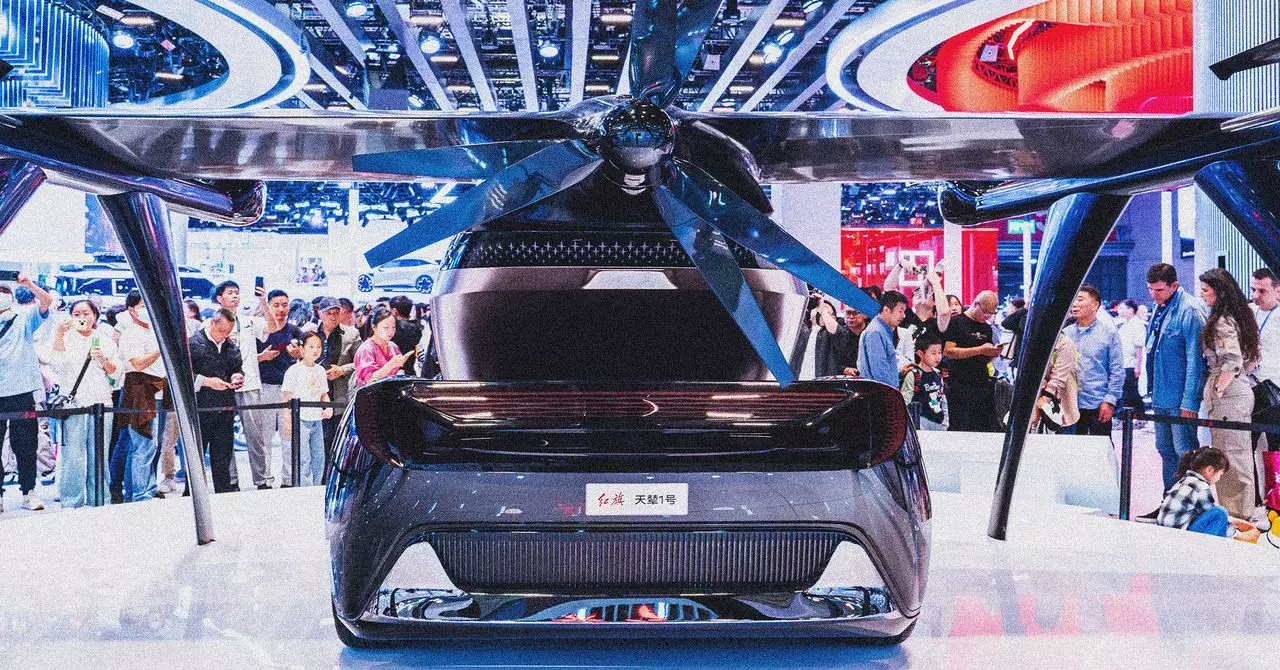Traveling to China is often compared to stepping into a parallel universe, where the familiar blends seamlessly with the extraordinary. Major cities like Shanghai and Beijing present an almost surreal mix of the global and the unique; you’re in a place that resembles home but operates on a different frequency. This phenomenon is particularly striking in the automotive landscape, where the traditional benchmarks for manufacturing and design are being radically challenged. The 2024 Auto Shanghai motor show is a vivid testament to this transformation, showcasing more than 1,400 vehicles from 26 different countries. The sheer scale of this event is staggering, marking it as a crucial battleground for supremacy in the global car industry.
Unlike auto shows in the West that often boast a handful of global debuts, Auto Shanghai presented an awe-inspiring 93 premieres—leaving little room for doubt about China’s aggressive push into the automotive realm. The contrast with events like the Geneva International Motor Show is hard to ignore; while the latter struggles with diminishing attendance and even cancellation, China is setting the pace for a new era of vehicular ingenuity.
Beyond Familiar Brands: Navigating a Sea of New Names
As one strolls through the vast halls of Auto Shanghai, a mixed sense of nostalgia and bewilderment washes over you. While the gleam of polished metal and cutting-edge designs recalls previous motor shows in iconic cities such as Detroit, the reality is different. Western brands may have once reigned supreme, but familiar names are increasingly overshadowed by new contenders with ambitious aspirations. Brands like Jetour, Denza, and Changan sound foreign to Western ears, yet these names represent the future of mobility—evoking excitement not just for their innovation but also their aggressive pricing and advanced technology.
These new models feature outrageous designs, some edged with quirky elements that could evoke a sense of whimsy, but they also hold substantial technological promise. The electric vehicles on display often rival renowned Western counterparts, boasting capabilities that verge on the unbelievable—performance metrics that redefine what we thought was possible in automotive engineering.
The Titans of Tomorrow: A Glimpse of Innovation
Among the highlights at Auto Shanghai is the Jetour G900, an imaginative electric SUV equipped with two rear-mounted turbines, cleverly designed for versatility that even allows it to function as a boat. Such a radical idea challenges conventional automotive thought and illustrates a future where vehicles transcend traditional forms and functionalities.
Another contender, the Denza model from BYD, aims to take on Porsche with its impressive electric performance, while the Xpeng M03 Mona has already earned accolades. And let’s not forget the Maextro S800, which has managed to position itself as a rival to high-end luxury brands like Maybach. Incredible as it may seem, Huawei—primarily known for telecommunications—now finds itself deeply embedded in the automotive landscape through its Harmony Intelligent Mobility Alliance (HIMA). This alliance further underscores the convergence of technology and transportation, pushing the boundaries of what vehicles can do today.
Intense Competition and the Hunger to Disrupt
The atmosphere at Auto Shanghai is electrifying, fueled not just by the inventiveness on display but also by a palpable sense of competition. Traditional Western carmakers appear increasingly vulnerable, surrounded by feisty upstarts determined to disrupt the status quo. It’s a dual-edged sword: while established brands present an image of experience and know-how, they must now contend with competitors who are not only younger and tech-savvy but also unencumbered by legacy and tradition.
What stands out most is the urgency exhibited by these Chinese automobile manufacturers to carve out a meaningful space in a market that has long been dominated by Western giants. Their growth strategy is audacious and driven by innovation, quality, and consumer engagement that is in stark contrast to the sluggishness seen in some traditional markets.
These dynamics set the stage for a new automotive reality, where the once-unassailable foothold of Western brands is increasingly challenged. The stakes are high; a feeding frenzy for market share is well underway, fueled by a hunger to leave a mark that resonates far beyond the automobile itself. In an industry ripe for disruption, China has affirmed itself as a formidable player on the global automotive stage, with innovations that promise to redefine our understanding of transportation.

